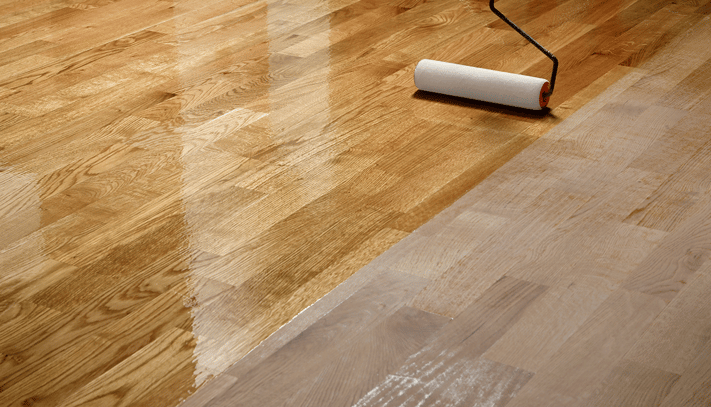Moisture Cure Urethane (MCU) floor coatings are the best protection against dirt and contaminants....
How to Avoid Bubbles in Reactive Urethane Floor Coatings
 Moisture cure urethane (MCU) floor coatings are the ultimate protection from dirt and contaminants, while providing long-lasting wear and pleasing aesthetics. Their beauty and aesthetic appeal, however, can be diminished by the presence of bubbles in the cured coating. These bubbles will likely lead to a hazy or cloudy finish, and even more serious issues such as loss of adhesion and decreased surface protection are possibilities. Our formulation chemists and product support groups have found that there are 2 main areas critical to avoidance of bubble formation:
Moisture cure urethane (MCU) floor coatings are the ultimate protection from dirt and contaminants, while providing long-lasting wear and pleasing aesthetics. Their beauty and aesthetic appeal, however, can be diminished by the presence of bubbles in the cured coating. These bubbles will likely lead to a hazy or cloudy finish, and even more serious issues such as loss of adhesion and decreased surface protection are possibilities. Our formulation chemists and product support groups have found that there are 2 main areas critical to avoidance of bubble formation:
- Proper surface preparation
- Formulation additives
Proper Surface Preparation
(MCU) floor coatings are applied on wood and concrete floors in homes, Institutional buildings and retail establishments. This type of floor coating is typically applied by coating professionals. Cleaning and maintenance are quick and easy using a light cleaner and water or micro cloth cleaning head.
The application process to obtain a quality appearance and lasting fresh look starts with a surface fully prepared for the coating. A thorough reading of the application instructions and safety directions are essential to working with MCU coatings. The floor must be sanded and or primed and clean of debris and moisture. Application techniques are by brush, lambs’ wool mop, or roller, and are critical to producing an attractive floor coating with superior depth of image to highlight the surface beneath.
Formulation Additives
MCU coatings cure by reacting with moisture in the air or on the surface and carbon dioxide (CO2 is a byproduct of the chemical cure process. In cases where the ambient temperature is high, and the humidity is high, CO2 can become trapped in the film creating cosmetic defects or in some cases causing a loss of adhesion to the substrate. This is a result of MCU coating surface curing before the carbon dioxide (CO2) escapes causing low gloss, poor adhesion, and an unattractive appearance.
Fortunately, there are two techniques to solve this issue:
- Retarder Solvents
- Bubble Breaking Agents
The first option available can be to add a retarder solvent to the MCU coating. A common source of entrapped bubbles is the too early formation of a dried “skin” layer that entraps the CO2 generated during curing and entraps them in the finished coating. The most common solution to this problem when it occurs, or before, is the addition of a higher boiling point solvent termed a retarder solvent which slows drying and inhibits the formation of the skin layer too soon. The result is slower solvent evaporation and holds the film open letting the CO2 escape creating a smooth film surface.
Related Article: Durable and Safe: The Next Generation of Water-Borne Urethanes
A second technique is to purchase a bubble breaker solution and add it to the moisture coating per the additive suppliers’ instructions. This additive will break the bubbles down and prevent the entrapment of CO2 in the dry coating. If the MCU coating is applied by a roller, it could require the bubble breaker and the retarder solvent because the roller increases exposure to moisture accelerating the cure which creates bubbles in the dry film.
Applicators are constantly adjusting for the ambient environment but find retarder solvents and bubble breaker additives are effective eliminating bubbles. MCU floor coating is a labor-intensive undertaking but the results of a successful application are pleasing for many years.
Chase Corporation, Westwood, Ma. Founded in 1946 is a leading manufacturer of industrial products for high-reliability applications with a global customer base operating in diverse market sectors. Chase specializes in the manufacture of waterborne polyurethane dispersions supplied to formulators for industrial, consumer coatings, and adhesives providing waterborne solutions. Our outstanding manufacturing and technical support groups can provide your organization with a reliable global supply, unmatched quality, and superior technical support.
Please contact us today to discuss your application.
Download The Starting Point Formulation for Clear Concrete Coating






